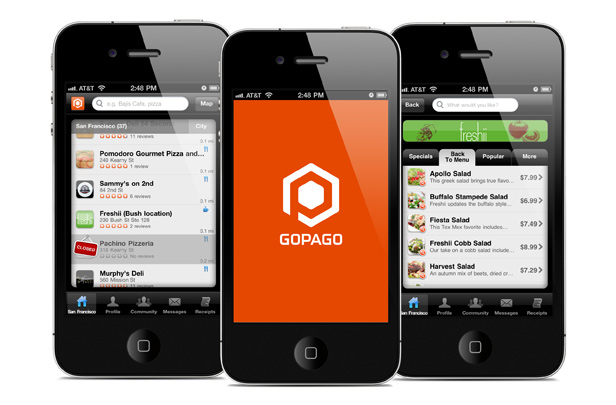A Banking Giant Makes a Mobile Payment Bet

Paying for something from a mobile phone still isn’t an option in most U.S. brick-and-mortar stores. But that reality is obscured in San Francisco. The Bay Area has been an early testing ground for a future full of smartphone-based transactions, with all sorts of companies, from Starbucks and PayPal to Google and startups like LevelUp getting involved [see “Battle of the Electronic Wallets”].
Into this crowded field comes GoPago, a startup that began widely marketing its own payment app in San Francisco this April after expanding from a smaller pilot program in the region.
The 70-person company has built a network of about 300 active merchants in the city so far, but it is a startup worth watching for another reason—one of its investors and strategic partners, as of February, is JPMorgan Chase, one of the nation’s largest banks and card issuers.
“This is a very, very competitive area. We’re still in the very early days of what could be a revolution in how people pay for things,” says Jack Stephenson, a former PayPal executive who is now JPMorgan Chase’s managing director for mobile, payments, and e-commerce.
JPMorgan Chase is spreading its bets as it explores emerging payment technologies, but it is also choosing carefully. It was an early investor in the mobile credit card reader Square [see “The New Money”], and has partnered with major wireless carriers who are developing the tap-to-pay mobile wallet Isis. It also has its own popular mobile banking app.
With GoPago, Chase has invested an undisclosed sum and is currently helping to sign up small business customers in San Francisco. It plans to continue providing this kind of assistance as GoPago, founded in 2009, expands its offerings to Dallas, New York, and Chicago later this year.
Leo Rocco, GoPago’s founder and CEO, says the service gives users legitimate incentives to take out their phone to pay. “Cash and credit card work just fine. There’s nothing wrong with them. But can you go to a place and say, ‘I’ll have my usual,’ and make that go faster?”
GoPago is a hybrid service that offers deals, enables payments, and allows Yelp-like reviews. From the free app, a consumer can explore a store’s mobile storefront, write reviews, place and pay for an order, and show up to collect it without waiting in line.
For merchants, from dry cleaners to salons to sandwich shops, the company provides an iPad app that integrates with existing sale systems. The owner can use it to, say, recognize loyal customers and offer real-time deals to increase sales on a slow day. Rocco says he is “leveling the playing field for small businesses” by offering these merchants tools that larger competitors like Amazon can deploy in a snap. The company collects a 5 percent transaction fee, which includes the typical card processing fees.
The Chase partnership could prove invaluable to GoPago, not the least because consumers and business owners are more likely to trust a bank with their credit card than an unknown startup.
It also could help GoPago gain a critical mass of users and local merchants, a daunting hump for new startups in the growing industry. If the initial pilots go well, Stephenson says, Chase could offer the service to its small business customers or promote it to its consumer cardholders. The early results, measured by metrics such as total and repeat users, seem promising, Stephenson says.
Chase, along with other major card-issuing financial institutions, has its own competitive reasons for getting involved with startups like GoPago. Aaron McPherson, practice director of IDC Financial Insights, says that as mobile payments gain traction on new platforms, card issuers are worried about protecting rewards programs and the valuable transaction data they collect [see Business Report: The Future of Money].
“They [Chase] are getting a seat at the table and learning the market,” he says. “Banks need to be aware of what’s going on. There’s no point in trying to stop it or control it.”
Keep Reading
Most Popular
Large language models can do jaw-dropping things. But nobody knows exactly why.
And that's a problem. Figuring it out is one of the biggest scientific puzzles of our time and a crucial step towards controlling more powerful future models.
The problem with plug-in hybrids? Their drivers.
Plug-in hybrids are often sold as a transition to EVs, but new data from Europe shows we’re still underestimating the emissions they produce.
Google DeepMind’s new generative model makes Super Mario–like games from scratch
Genie learns how to control games by watching hours and hours of video. It could help train next-gen robots too.
How scientists traced a mysterious covid case back to six toilets
When wastewater surveillance turns into a hunt for a single infected individual, the ethics get tricky.
Stay connected
Get the latest updates from
MIT Technology Review
Discover special offers, top stories, upcoming events, and more.